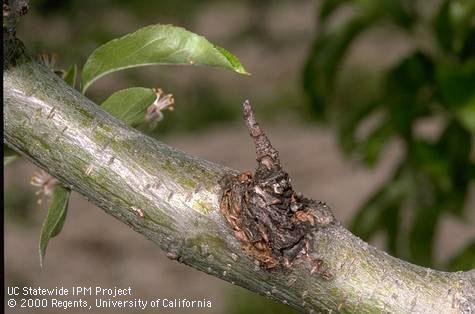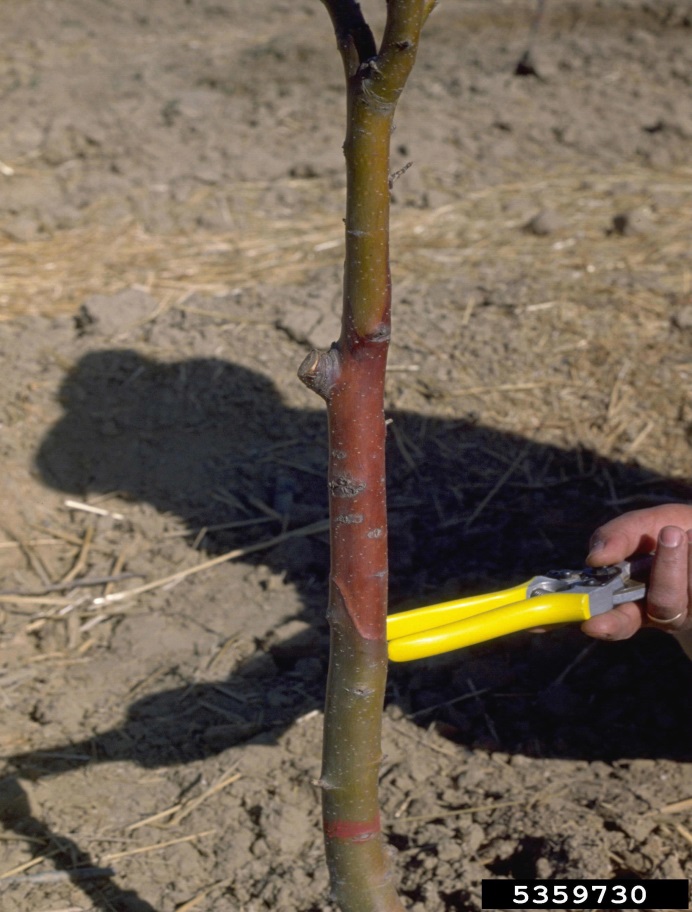
European canker
| Primefact number | Edition | Published | Author |
|---|---|---|---|
| 1160 | Second | Apr 2017 | Plant Biosecurity and Product Integrity |

 European canker (Neonectria ditissima) is an exotic plant pest not present in Australia. This plant disease is a serious threat to Australia’s apple and pear industries and amenity plantings.
European canker (Neonectria ditissima) is an exotic plant pest not present in Australia. This plant disease is a serious threat to Australia’s apple and pear industries and amenity plantings.
Notifiable status
European canker (Neonectria ditissima) is a notifiable plant disease in NSW.
All notifiable plant pests and diseases must be reported within 1 working day. You can report notifiable plant pests and diseases by one of the following methods:
- Call the Exotic Plant Pest Hotline 1800 084 881
- Email biosecurity@dpi.nsw.gov.au with a clear photo and your contact details
- Complete an online form
A full list of notifiable plant pests and diseases can be found in Schedule 2 of the NSW Biosecurity Act 2015.
Current situation
European canker is caused by the fungus Neonectria ditissima. It is a pathogen which enters host tissue through wounds or immature scar tissue.
European canker was found in orchards in Spreyton, Tasmania in 1954. A long term treatment and management program was undertaken until 1991 when the pathogen was eradicated.
Australia is currently free of European canker.
Symptoms
European canker is first seen as a reddish-brown spot around a leaf scar, spur or pruning wound, usually in late spring or early summer.
The canker develops and forms ring shaped cracks in the bark, which may appear swollen. If the canker girdles the trunk or branch, any shoots above the canker will die. A ridge or collar of healthy tissue walls off the canker.
Young cankers produce small whitish fruiting bodies. Mature cankers may produce orange-red fruiting bodies.
Infection from well established cankers can enter woody tissue and express as dark brown staining which extends beyond the bark lesions.
Dieback of infected limbs occurs.
World distribution
European canker is present in all regions of commercial apple and pear production throughout the world except Australia.
Fruit, bark and above ground shoots, stems and branches are host plant parts that can carry the pathogen either internally or externally. Foliage is not affected.
At risk industries for the spread of European canker are orchards, nursery and garden, hardwood timber and mulch.
Hosts
A wide range of deciduous trees are susceptible to European canker.
Hosts include fruit trees such as apple, pear and walnut and amenity trees such as beech, birch, elm, maple, oak and willow.
Life cycle
The European canker fungus belongs to the ascomycete group. Ascomycete fungi produce two distinct spore types; conidia and ascospores.
Cool wet weather in autumn and winter favours spore development from cankers. New infections probably occur in autumn through leaf scars.
Once infection occurs, the fungus slowly penetrates bark tissue. Lesions become apparent 2 to 3 months later in spring. Cankers are formed and may encircle and kill twigs and small branches.
Older cankers produce airborne spores (ascospores) that can initiate new infections at a distance from the original canker.
Spread and movement
Long distance spread of European canker is primarily the result of the movement of nursery stock and infected material.
New cankers produce conidial spores. These spores are spread primarily by rain or overhead irrigation for short distances.
Airborne spores function mainly to initiate new infections while the water-borne spores (conidial) serve to intensify the disease in trees that are already infected.
Control
European canker is managed by pruning out cankers and by using protectant fungicides.
Actions to minimise risks
Put in place biosecurity best practice actions to prevent entry, establishment and spread of pests and disease:
- practice “Come clean, Go clean”
- ensure all staff and visitors are instructed in and adhere to your business management hygiene requirements
- source propagation material of a known high health status from reputable suppliers
- keep records

